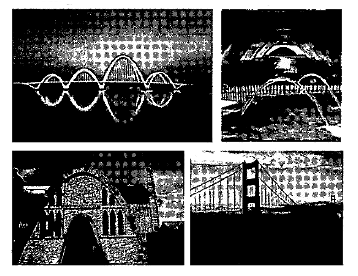If the roots of the quadratic polynomial are equal, are the discriminant D=B2−4AC, then:
D>0
D<0
D≥0
D=0
The correct Answer is:D
To determine the condition under which the roots of a quadratic polynomial are equal, we start with the standard form of a quadratic polynomial:
P(x)=Ax2+Bx+C
The discriminant D of this polynomial is given by the formula:
D=B2−4AC
Step 1: Understand the condition for equal roots
For a quadratic polynomial, the roots are equal (or repeated) if and only if the discriminant D is equal to zero.
Step 2: Set the discriminant to zero
To find the condition for equal roots, we set the discriminant to zero:
B2−4AC=0
Step 3: Rearranging the equation
Rearranging the equation gives us:
B2=4AC
Conclusion
Thus, the condition for the roots of the quadratic polynomial Ax2+Bx+C to be equal is:
D=B2−4AC=0
Summary
If the roots of the quadratic polynomial are equal, then the discriminant D must be zero.
---
For a quadratic polynomial, the roots are equal (or repeated) if and only if the discriminant D is equal to zero.
To find the condition for equal roots, we set the discriminant to zero:
Rearranging the equation gives us:
Thus, the condition for the roots of the quadratic polynomial Ax2+Bx+C to be equal is:
If the roots of the quadratic polynomial are equal, then the discriminant D must be zero.
Topper's Solved these Questions
- SAMPLE PAPER 6Book:OSWAL PUBLICATIONChapter:SAMPLE PAPER 6Exercise:Section - A
Explore 6 Videos
- SAMPLE PAPER 6Book:OSWAL PUBLICATIONChapter:SAMPLE PAPER 6Exercise:Section - B
Explore 5 Videos
- SAMPLE PAPER 5Book:OSWAL PUBLICATIONChapter:SAMPLE PAPER 5Exercise:Section -C
Explore 2 Videos
- SAMPLE PAPER 7Book:OSWAL PUBLICATIONChapter:SAMPLE PAPER 7Exercise:Section -C
Explore 7 Videos
Similar Questions
The below picture are few natural examples of parabolic shape which is represented by a quadratic polynomial. A parabolic arch is an arch in the shape of a parabola. In structures, their curve represents an efficient method of load, and so can be found in bridges and in architecture in a variety of forms.

If the roots of the quadratic polynomial are equal, where the discriminant D=b2−4ac, then
View SolutionThe below pictures are few natural examples of parabolic shape which is represented by a quadratic polynomial. A parabolic arc is an arc in the shape of a parabola. In structures, their curve represents an efficient method of load, and so can be found in bridges and the architechture in a variety of forms.
If the zeroes of the quadratic polynomial are equal, where the discriminant D=b2−4ac, then

View Solution
Knowledge Check
If the zeroes of the quadratic polynomial ax2+bx+c,c≠0 are equal,then
Ac and a have opposite signsBc and b have opposite signsCc and a have the same signDc and b have the same signIf the zeroes of the quadratic polynomial x2+(a+1)x+b are 2 and -3 ,then
Ax2+(a+1)x+b are 2 and -3 ,thenBa=5,b=−1Ca=2,b=−6Da=0,b=−6If the zeroes of the quadratic polynomial x2+(a+1)x+b are 2 and -3, then
Aa=−7,b=−1Ba=5,b=−1Ca=2,b=−6Da=0,b=−6
If the roots of quadratic equation are equal , then the discriminant of the equation is ______
View SolutionIf both the zeros of the quadratic polynomial ax2+bx+c are equal and opposite in sign, then find the value of b.
View SolutionDetermine the nature of the roots of the following quadratic equations from their discriminants :
x2−4x+4=0
View SolutionWrite a quadratic polynomial, whose zeros are 2 and 4.
View SolutionDetermine the nature of the roots of the following quadratic equations from their discriminant :
(i) 2x2−3x−4=0 (ii) x2−2x+94=0.
View Solution